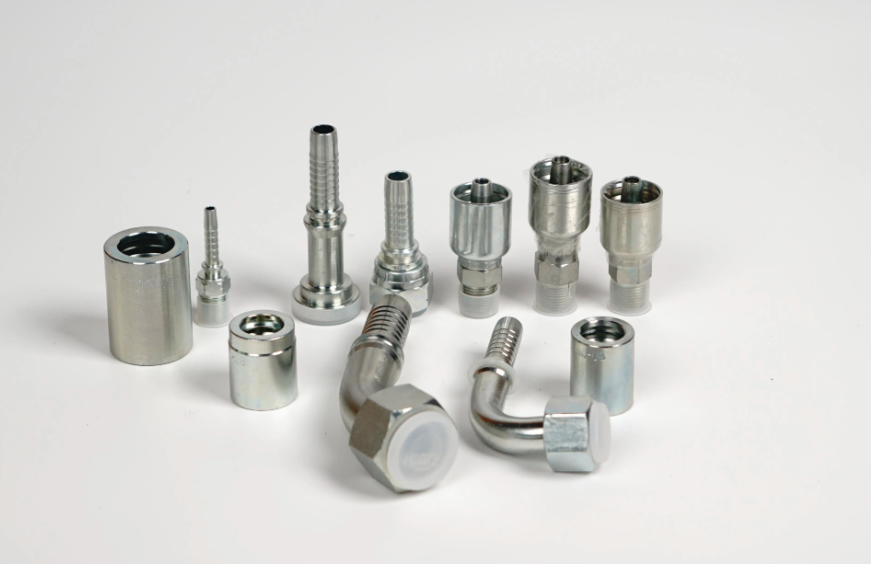Hydraulic hose couplings are the backbone of many hydraulic systems and play a critical role in efficiently and safely transferring fluids under high pressures. From construction heavy machinery to industrial applications and even everyday cars, these accessories ensure the seamless flow of hydraulic fluid. In this comprehensive guide, we’ll take a deep dive into the world of hydraulic hose couplings, exploring their types, applications, and the importance of proper installation. So, let’s get started!
Hydraulic hose couplings – Overview:
Hydraulic hose couplings are mechanical devices designed to connect hoses to hydraulic components such as pumps, valves, cylinders, and motors. These accessories are critical to ensuring secure connections, preventing leaks and maintaining system integrity. While the hose itself carries hydraulic fluid, the coupling seals the connection and allows pressure to be transmitted.
Hydraulic hose connector types:
A wide variety of hydraulic hose couplings are available to suit a variety of applications and system requirements. Here are some common types:
1. Straight-through connector: The straight-through connector is the simplest and most common type. Straight fittings feature a straight tube design with no angles or bends.
2. Elbow joint: Elbow joint is used to change the direction of the hose by 90 degrees or other angles to facilitate wiring in a small space.
3. T-joints: These joints have a T-shaped design and are used when the hydraulic system needs to branch into multiple lines.
4. Adapters and connectors: Adapters and connectors allow for the connection of different types or sizes of hoses, as well as the integration of non-hydraulic components.
Choose the correct hydraulic hose fitting:
Proper selection of hydraulic hose couplings is critical to ensuring optimal system performance and safety. When selecting accessories for your specific application, consider the following factors:
1. Pressure rating: Fittings must have adequate pressure ratings to withstand the maximum hydraulic pressure within the system.
2. Size compatibility: Ensure connector size matches hose specification to ensure safe installation and prevent leaks.
3. Material compatibility: Confirm that the joint material is compatible with the fluid being transported to prevent chemical reaction or corrosion.
Installation and maintenance:
The installation process of hydraulic hose couplings requires the highest precision to avoid potential hazards. Here are some basic steps to follow:
1. Cut the hose: Use appropriate tools to cut the hose smoothly and squarely, ensuring that the inner tube or reinforcement is not damaged.
2. Prepare the connectors: Thoroughly clean the connectors and inspect them for any damage or debris that may prevent proper connection.
3. Assembly: Carefully assemble the coupling onto the hose following manufacturer's guidelines. Make sure to use proper crimping techniques to achieve a secure connection.
4. Regular maintenance: Check accessories regularly for signs of leakage, wear or damage. Replace faulty accessories promptly to avoid system failure or accidents.
In summary:
Hydraulic hose couplings are the critical link between hydraulic hoses and components, allowing for seamless fluid transfer under extreme pressures. By understanding the different types of couplings, selecting the correct coupling for your application, and following proper installation and maintenance practices, you can ensure that your hydraulic system operates efficiently and safely. Remember, the importance of hydraulic hose couplings is their ability to maintain system integrity and prevent costly downtime.
For expert advice or assistance in selecting and installing hydraulic hose couplings, consult a reputable supplier or a professional experienced in hydraulic systems.
Post time: Nov-14-2023

